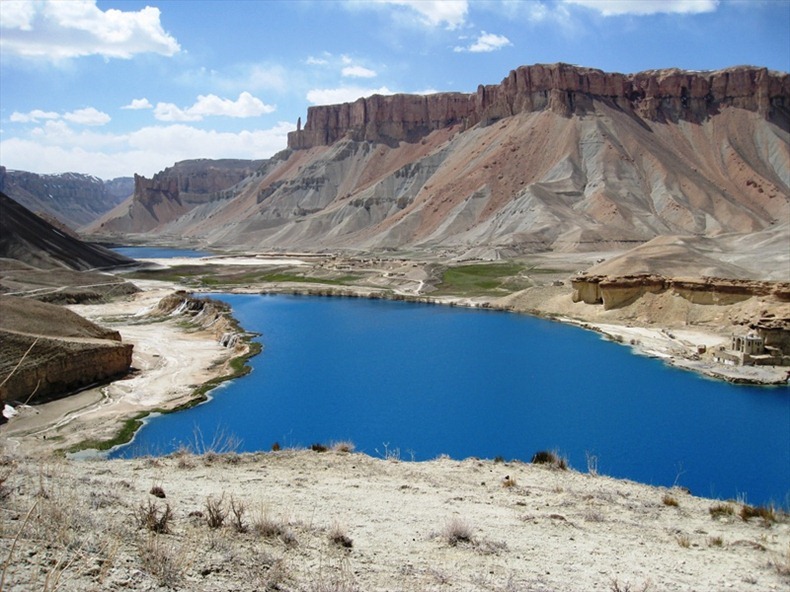The name Afghanistan invokes images of a dry and arid country with mountainous terrain, endless desert, thorn bushes and mud houses. But at the center of this depressing landscape is a series of spectacular lakes with water so blue that it looks almost like ink.
Band-e Amir is a series of six incredibly deep blue lakes in the heart of the central Afghanistan. The lakes are situated in the foothills of the Hindu Kush, the second highest mountain range in the world, 80 kilometers from the ancient town of Bamiyan, where the Taliban destroyed the world’s tallest Buddha statues in 2001. Surrounded by pink towering limestone cliffs almost in complete lack of vegetation, the stunning lakes seems totally out of place.
The beautiful lakes were created by the carbon dioxide rich water that is drawn from the spring melt-water in the surrounding mountains and came out from faults and cracks in the rocky landscape. This outflow of water percolates slowly through the underlying limestone, dissolving its principal mineral, calcium carbonate. Over time, the water deposited layers of hardened mineral (travertine), which created dams that trap water in increasingly large basins. These dams are usually about 10m high and 3m wide. Water cascades from one lake to the other near travertine terraces serving as massive natural dams between the lakes.

The deep blue color of the lakes is due to the clarity of the air as well as the purity of the water. The high mineral content of the lakes also causes the intense and varying colors of the lake waters.
Of the six lakes, Band-e Panir is the smallest, with a diameter of approximately 100m (330ft). The largest is Band-e Zulfiqar, which measures some 6.5km (4mi) in length. The most accessible of the lakes is Band-e-Haibat, literally translated as Dam of Awe.
Band-e-Amir had been a destination for travelers since the 1950s. The lakes became a national park only in 2009, although their beauty was recognized much earlier, in 196o. But due to the instability of the government at that time, it wasn't recognized as a national park. Covering approximately 230 square miles, Band-e Amir is Afghanistan’s first and only national park and it also features on UNESCO World heritage list.










कोई टिप्पणी नहीं:
एक टिप्पणी भेजें